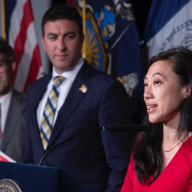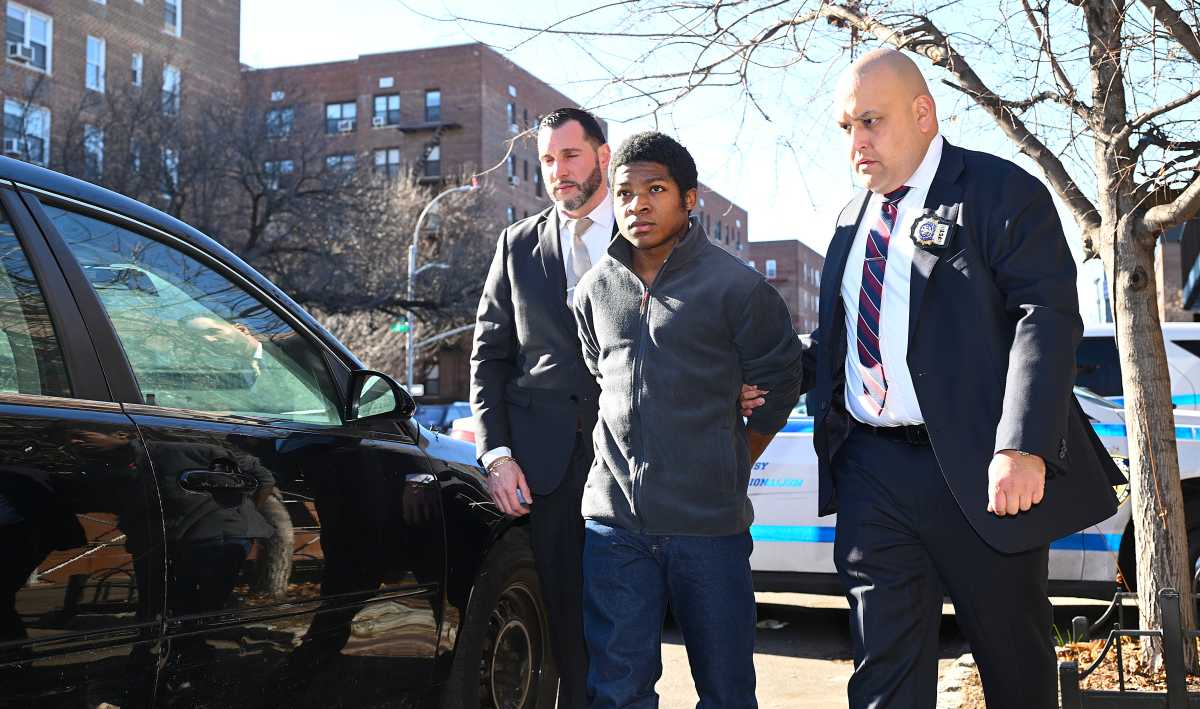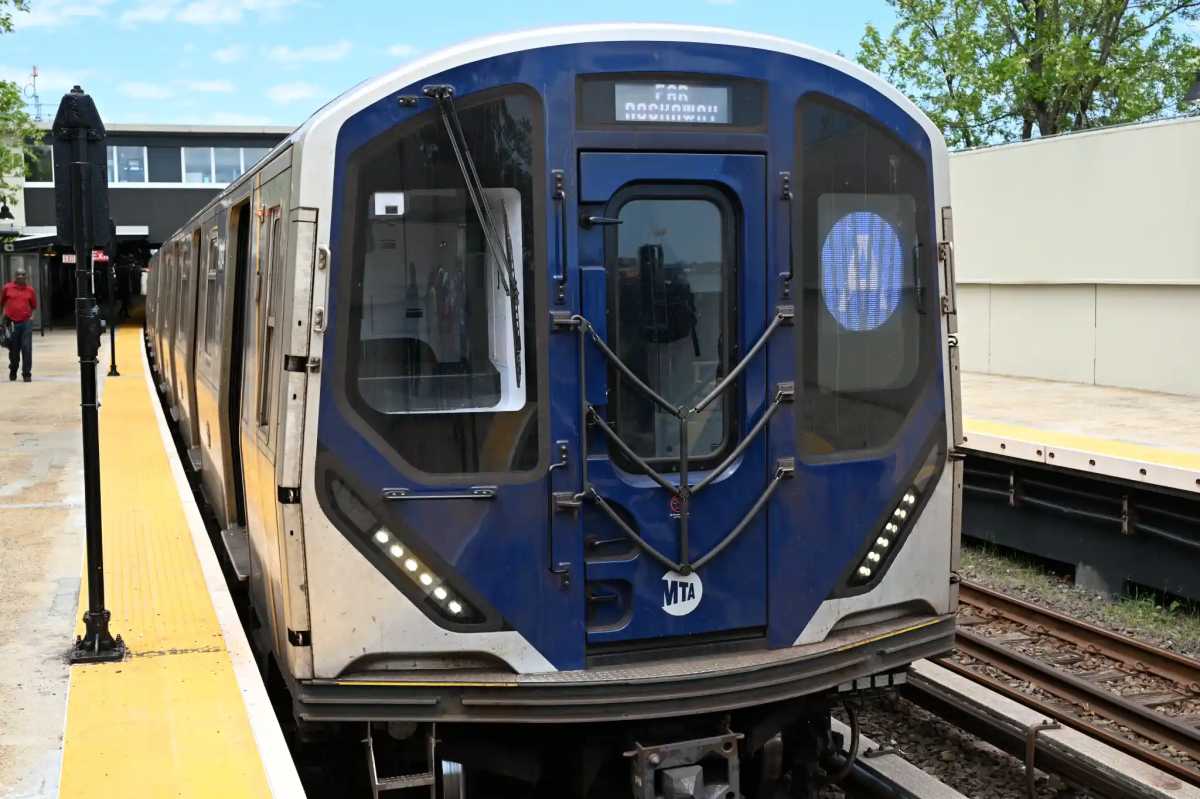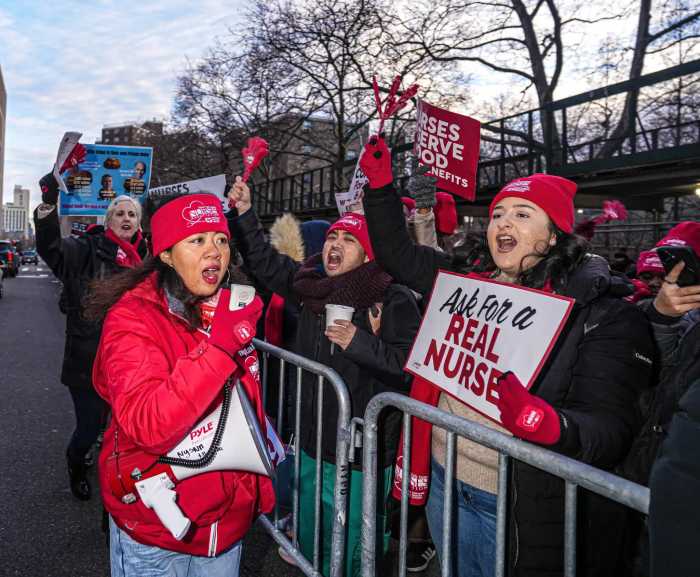In the 1982 movie “Poltergeist,” a family is tormented after buying a home built on a cemetery from which the tombstones, but not the human remains, were removed.
If a Florida developer has his way, life will have a chance to imitate art in Fresh Meadows. But there are people who want him to move toward the light.
On Monday, July 14, about two dozen neighbors and officials, led by City Councilmember James Gennaro and Senator Toby Stavisky, gathered at the site of the Brinckerhoff Cemetery on 182nd Street in Fresh Meadows, to protest both its original sale by the city and its proposed development as housing.
The current owner, DeDomenico Ventures, Ltd., wants a judge to declare that the bodies have decomposed, so they should be able to build two houses on the site.
According to Jim Driscoll, president of the Queens Historical Society, between 1736 and 1872, the property was the family plot on the Brinckerhoff Farm. That family settled in Queens as early as 1628, according to Driscoll.
A survey made over a one week period in September of 1919 located and numbered 77 graves on the property. The tombstones were readily visible until they were, “buried by the owner,” according to Hank Gottleib, who has lived across the street from the site for 40 years.
State law prohibits re-use of cemetery land unless all the bodies are removed, Gennaro acknowledged. “It’s the bailiwick of the City of New York to protect this site,” he said. Gennaro supports a long-delayed application to have the property declared a landmark by the city.
The city’s administrative code also demands that bodies be removed and “when distinguishable” be re-buried in a container and all stones and markers be moved to the new gravesite. Family members have to be buried together in “contiguous graves.”
Existing laws covering cemeteries don’t specifically deal with a family-farm, private burial ground like this one. “I don’t think that matters,” Gennaro said. “The city is the burier of last resort, as potter’s field attests; we may have to be the cemetery custodian of last resort as well.”
Stavisky, a former teacher, called the site important. “We have to pay attention to our history,” she said, saying that such historic places “Instill a sense of community pride.”
“Approximately 77 people are buried here,” Stavisky continued. “This is not abandoned property - it’s a cemetery.”
Councilmember Peter Vallone lent his support to the landmarking effort and expressed annoyance at the notion. “There’s no time limit on a cemetery,” he said, adding, “There’s no time limit on history.”
The city’s Landmarks Preservation Commission has had the graveyard on its calendar since 2000. At that time, there was a question of ownership, due to a family dispute over the estate, according to James Gallagher, Jr., president of the Fresh Meadows Home Owners Civic Association.
“There’s no question about who owns it now, so the matter should be considered by Landmarks now,” he said.
The property lies north of 73rd Avenue, which was once known as Black Stump Road, and consists of two irregular lots. In 1957 and 1960, the land was auctioned off to Joseph DeDomenico, who lived up the block.
It passed through the family to DeDomenico Ventures, Ltd., headed by Ralph DeDomenico, a son living in Florida.
His Forest Hills-based lawyer, Gerald Chiariello is quoted in published reports as saying, “Why can’t you get it in your head? This ain’t a cemetery anymore, it’s a dump.”
What Gottleib, who had been the unofficial caretaker of the property for years, picking up garbage and tending the ground around the tombstones, can’t get out of his head is what he was told when the markers were hidden from view.
“It was sometime in the 1980s,” Gottleib recalled, “He said it was so they wouldn’t be vandalized.”






























